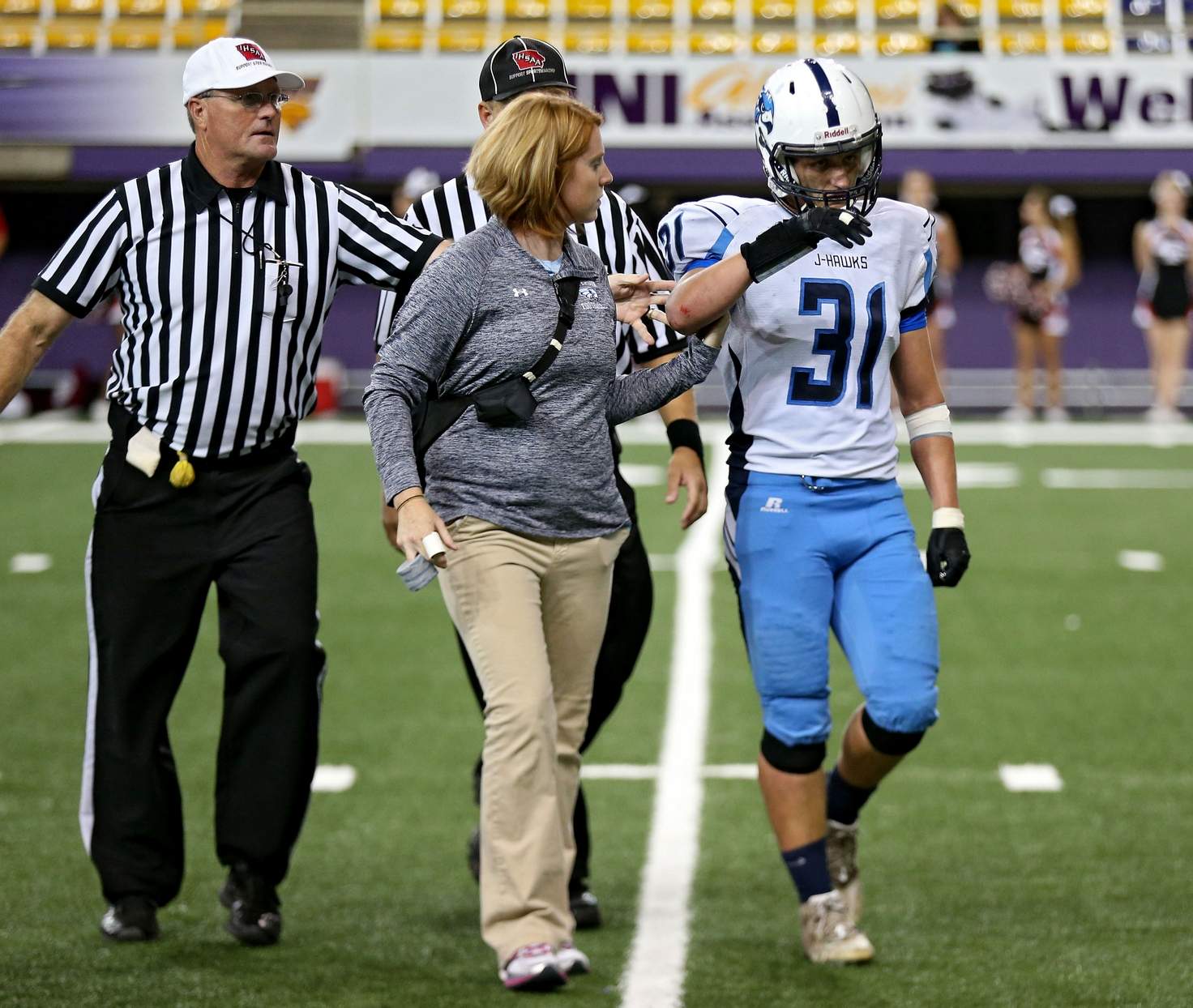
Editor’s note: Nancy Justis is a former competitive swimmer and collegiate sports information director. She is a partner with Justis Creative Communications.
A bill on the Iowa Senate calendar requires all coaches take a certification training course in cardiopulmonary resuscitation, automated external defibrillator use and heat injury treatment. An amendment incorporates a modified version of the bill, requiring concussion monitoring at athletic events. The amendment requires the home team in an extracurricular interscholastic high school level “collision sport” contest to have a qualified medical person present and available to assess injuries.
“My view is we have an obligation to make sure our kids are safe in every school situation, including athletics,” said senator Jeff Danielson. “When there are risks, we should take steps to ensure quality health care is available. Something fun shouldn’t turn into something bad because we haven’t been proactive in planning for accidents that we know will occur.”
How important is it to have medical personnel at football, wrestling and boys’ and girls’ soccer games and matches? Why not other events and all practices? Why not middle school?
Obviously, this would be the ideal practice. However, funding the mandate and finding the number of certified personnel needed may not be reality for school districts.
The National Athletic Trainers Association reported the number of students who participate in high school athletics has been on the rise “since the 1970s” and “more than 7.8 million high school athletes compete each year.
“In 2013, there were an estimated 1.24 million emergency room visits for injuries related to the 14 most commonly played sports in children under 19. Approximately 62 percent of sports injuries occur during practice.”
NATA’s “Strategies for Funding and Employing an Athletic Trainer in the Secondary School” also noted, according to the Centers for Disease Control, more than half of all sports injuries in youth are preventable when guidelines and personnel are in place. “ … only 37 percent of public high schools employ a full-time athletic trainer.”
Additional NATA figures show 6,374 of its members working primarily in secondary schools. About 18,426 high schools offer “some level of interscholastic sports.
“Assuming each secondary school athletic trainer was working full-time at one of the high schools, then 34 percent of high schools with sports programs have full coverage,” reasoned a report by the Scripps Howard News Services review of high school sports medicine around the country.
“Data on team sports injuries among 14-to-18-year-olds from the National Electronic Injury Surveillance System … and from the U.S. Consumer Product Safety Commission” showed students get more appropriate care for injuries when an athletic trainer is on staff.
According to athletics director Gary Koenen, Cedar Falls High School has had an athletic trainer for more than 23 years.
“It’s an essential part of the total athletic program at the high school level,” he said. “In the past five years, we’ve expanded our coverage to include a trainer at junior high football (and) volleyball home events. It’s not always possible to cover all the seven through nine game fields at the same time, but we do the best we can.”
Both Cedar Falls and Waterloo school districts have contracts with Cedar Valley Medical Specialists to supply their trainers. Cedar Falls also has a relationship with the University of Northern Iowa and its athletic training program.
“Trainers are present for (most) high school events and practices,” said Willie Barney, Waterloo’s athletics director. “We do not have trainers at all events but have them at contact events like wrestling and football and large cross country meets or basketball games. They are at high schools during the afternoon to cover all sports practices that may be going on. The trainers are supported through our athletic budgets similar to referees.”
Cedar Rapids is another larger school district. According to Mary Ellen Maske, deputy superintendent, the district has “an athletic trainer at each of the three high schools. They are at all varsity athletic events and at lower level events that are impact sports.”
In addition, trainers are present at “most” athletic practices, in particular impact sport practices. And “if not in the actual practice room, they are in the building.” Middle schools do not have trainers. Funding comes from the general budget.
Alan Beste, executive director of the Iowa High School Athletic Association, believes the intent of having qualified medical professionals at sporting events “may reduce the risk of a student-athlete returning to participation too quickly … However, the real value of a licensed athletic trainer is the prevention and care of athletic injuries … the same benefits should apply to youth sports.
“We do not advise our member schools in this area other than to recommend they have an emergency action plan in place and to provide the best medical care possible given the accessibility of medical professionals in their area of the state.”
The Iowa Girls High School Athletic Union also has not taken a stance on this issue.
“It is a two-sided situation,” said Mike Dick, executive director. “Being idealistic, it makes total sense to have a medically trained person on site … on the realistic side, are there enough trained medical personnel out there to cover every football or basketball or wrestling event?
“Assuming this would be an ‘unfunded mandate’ at the same time the legislature and governor are providing less than adequate funding for schools — how are schools expected to pay for this additional cost?”
Let us know what you think by contacting Justis at njustis@cfu.net